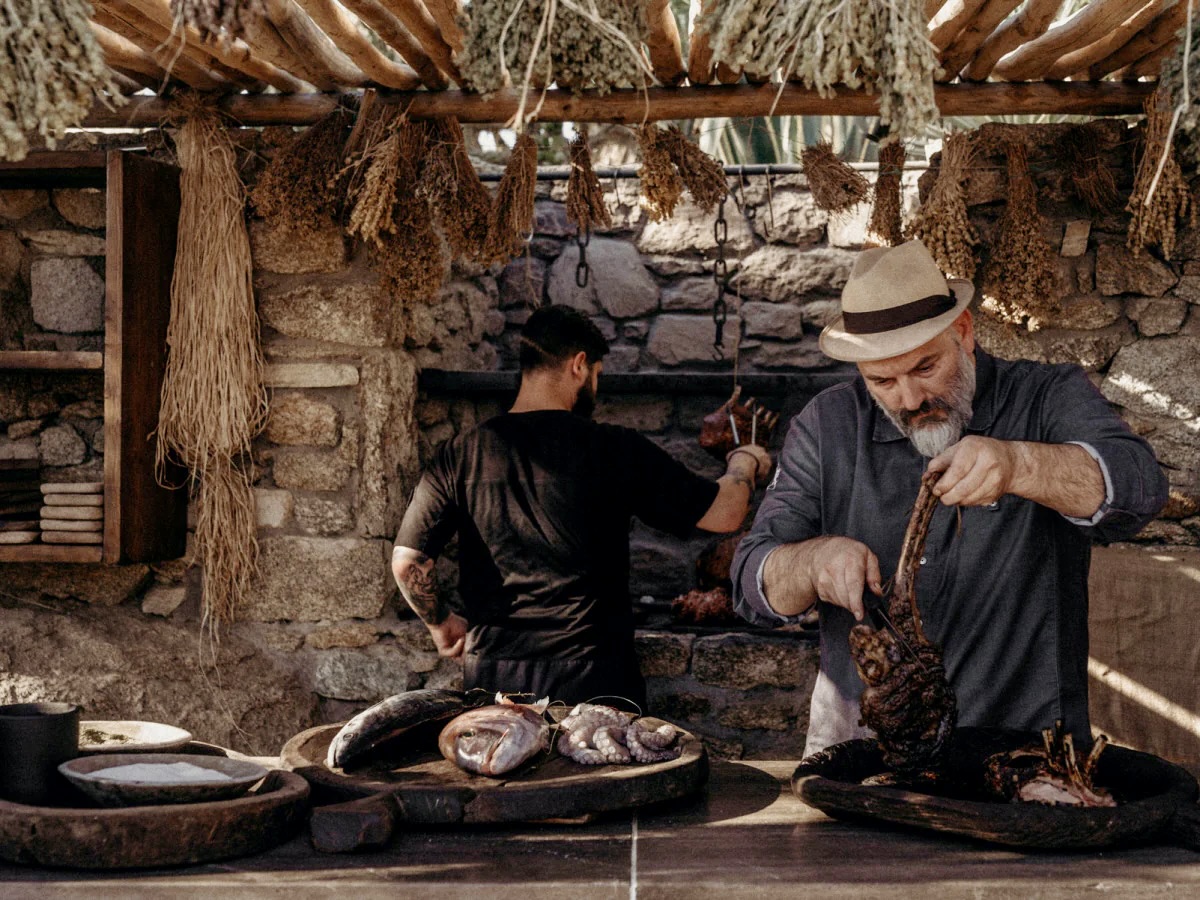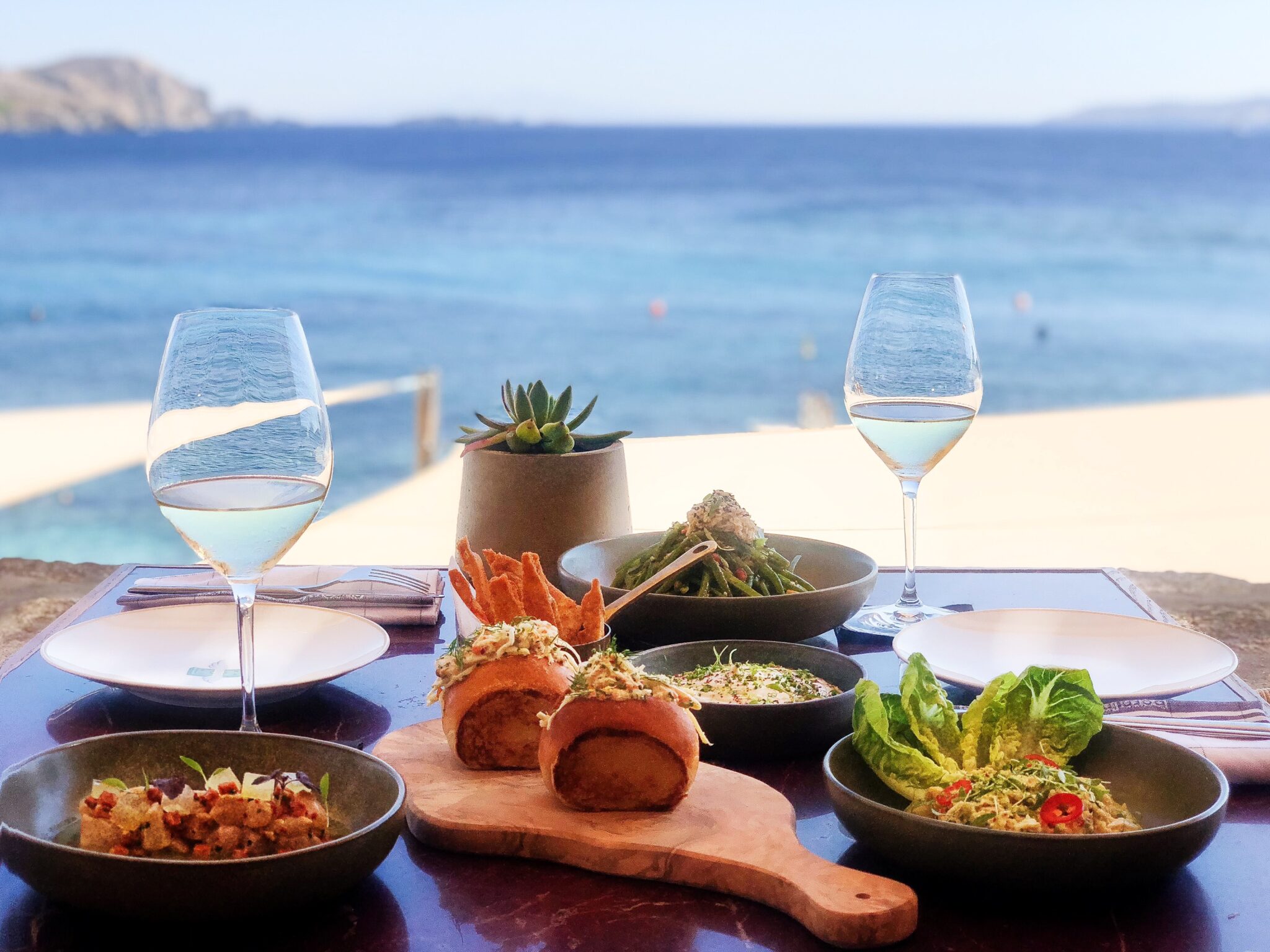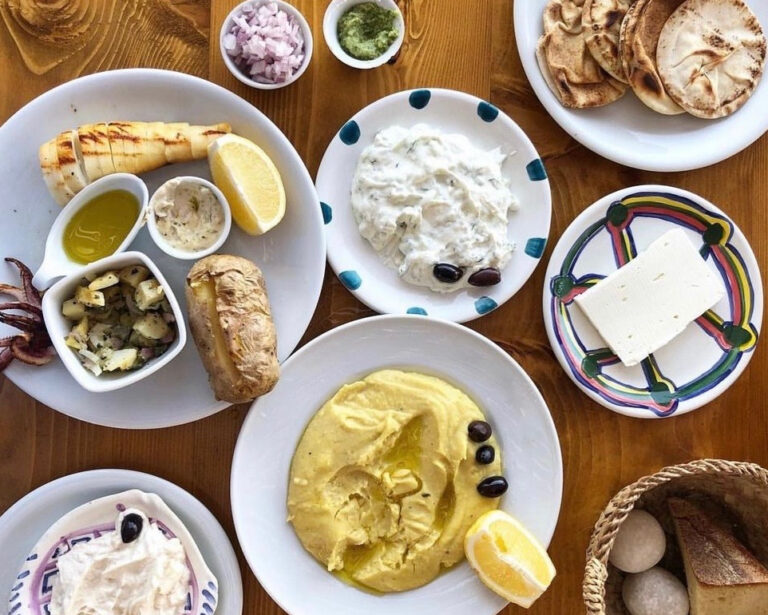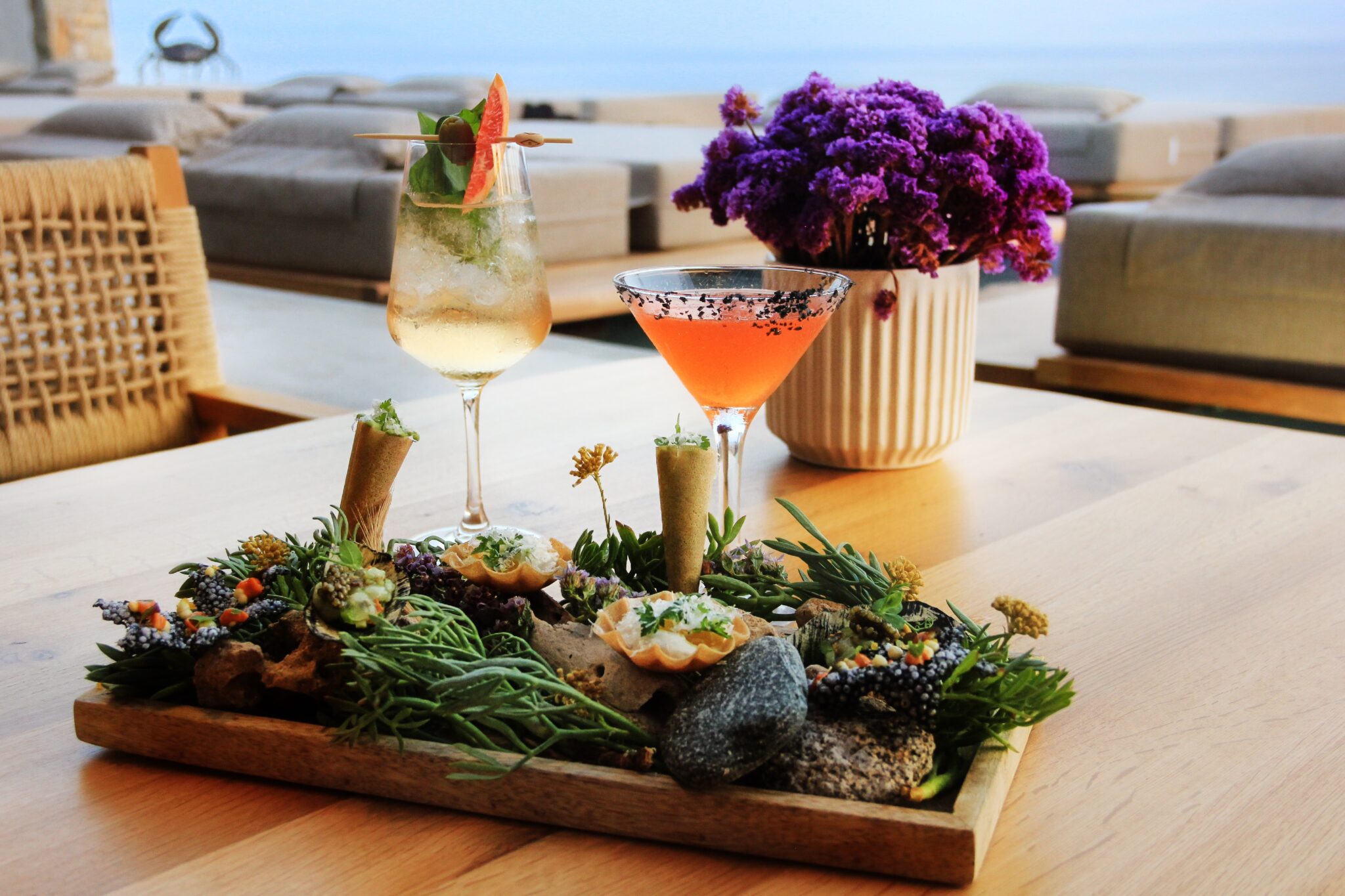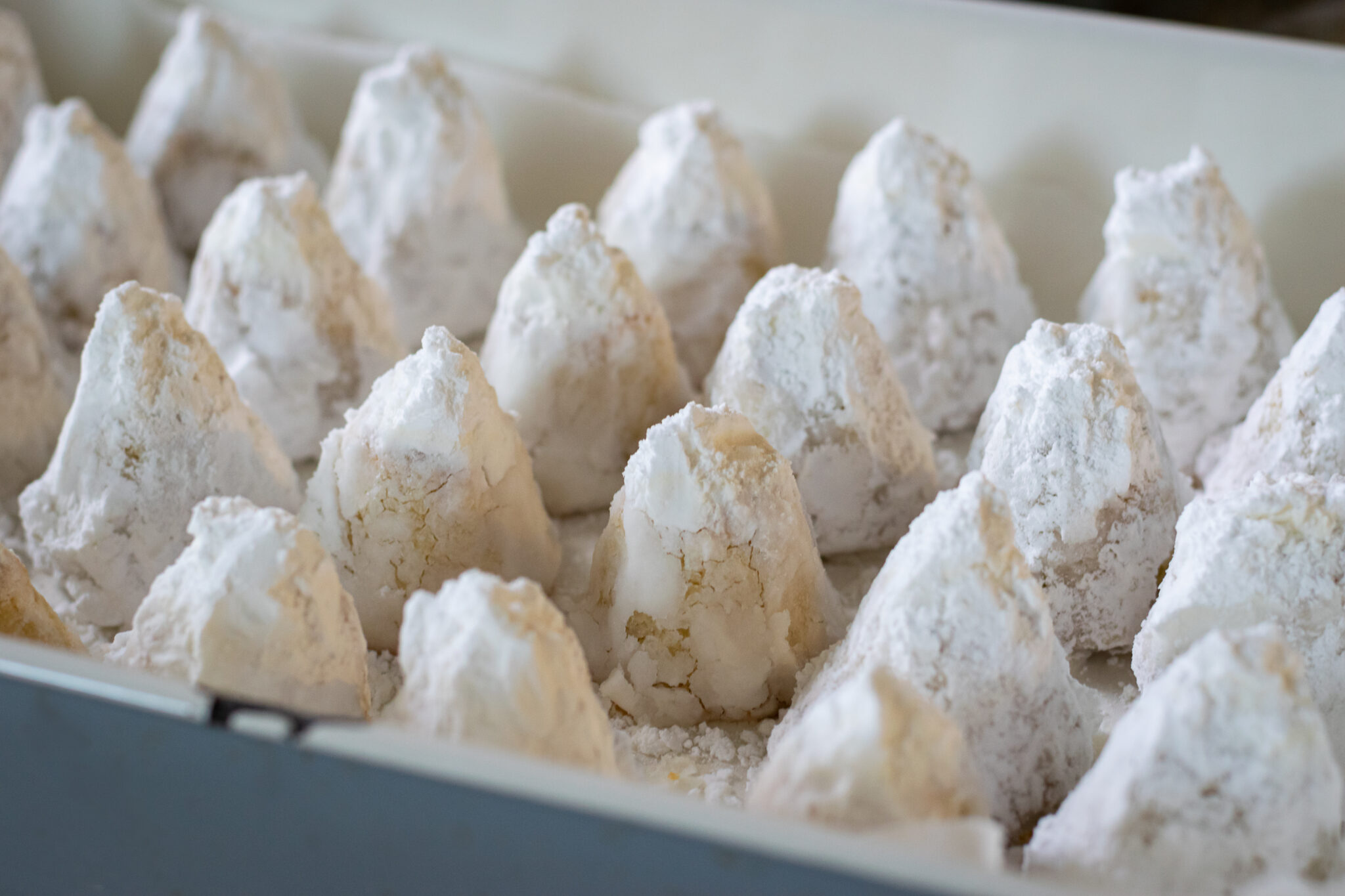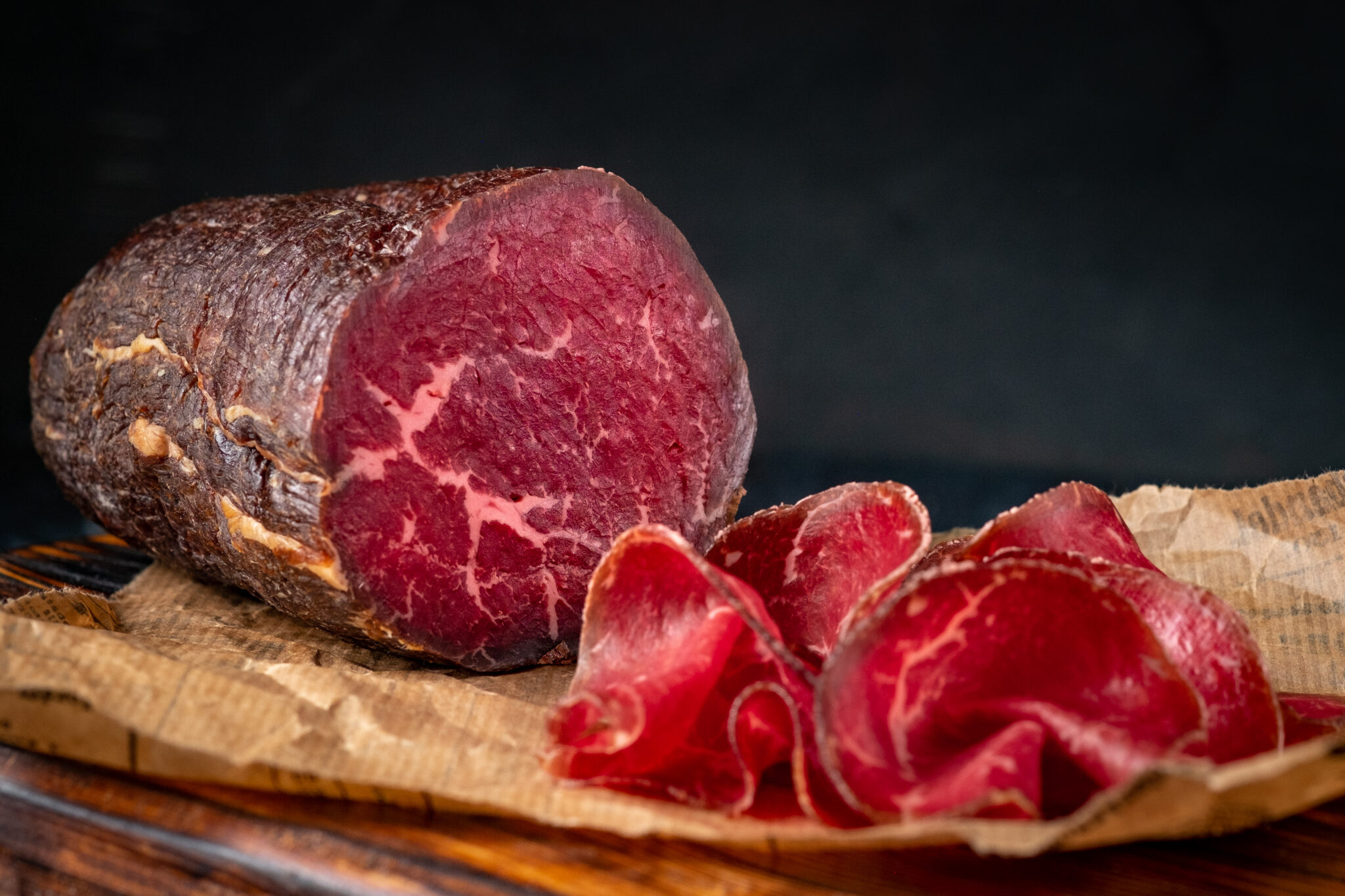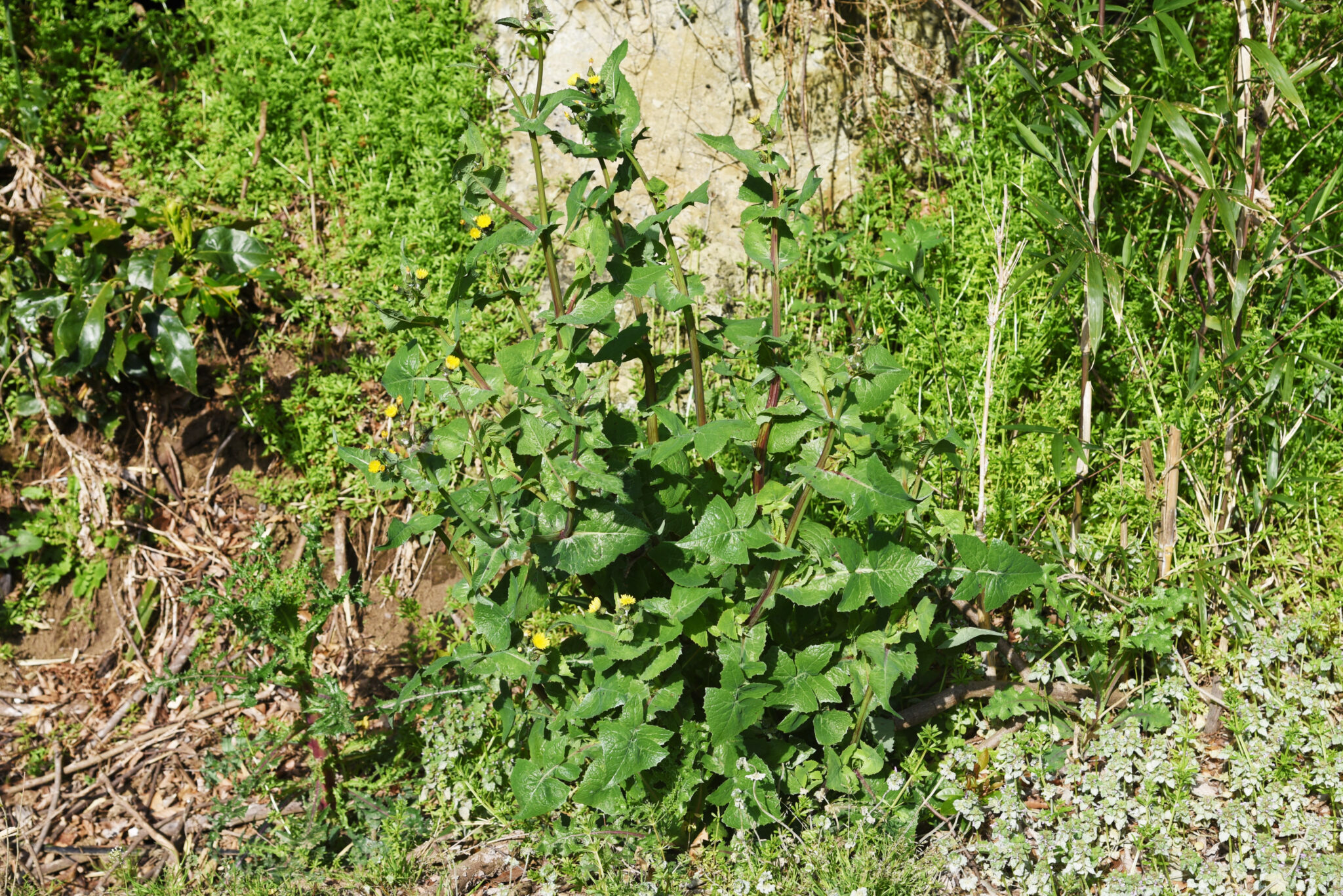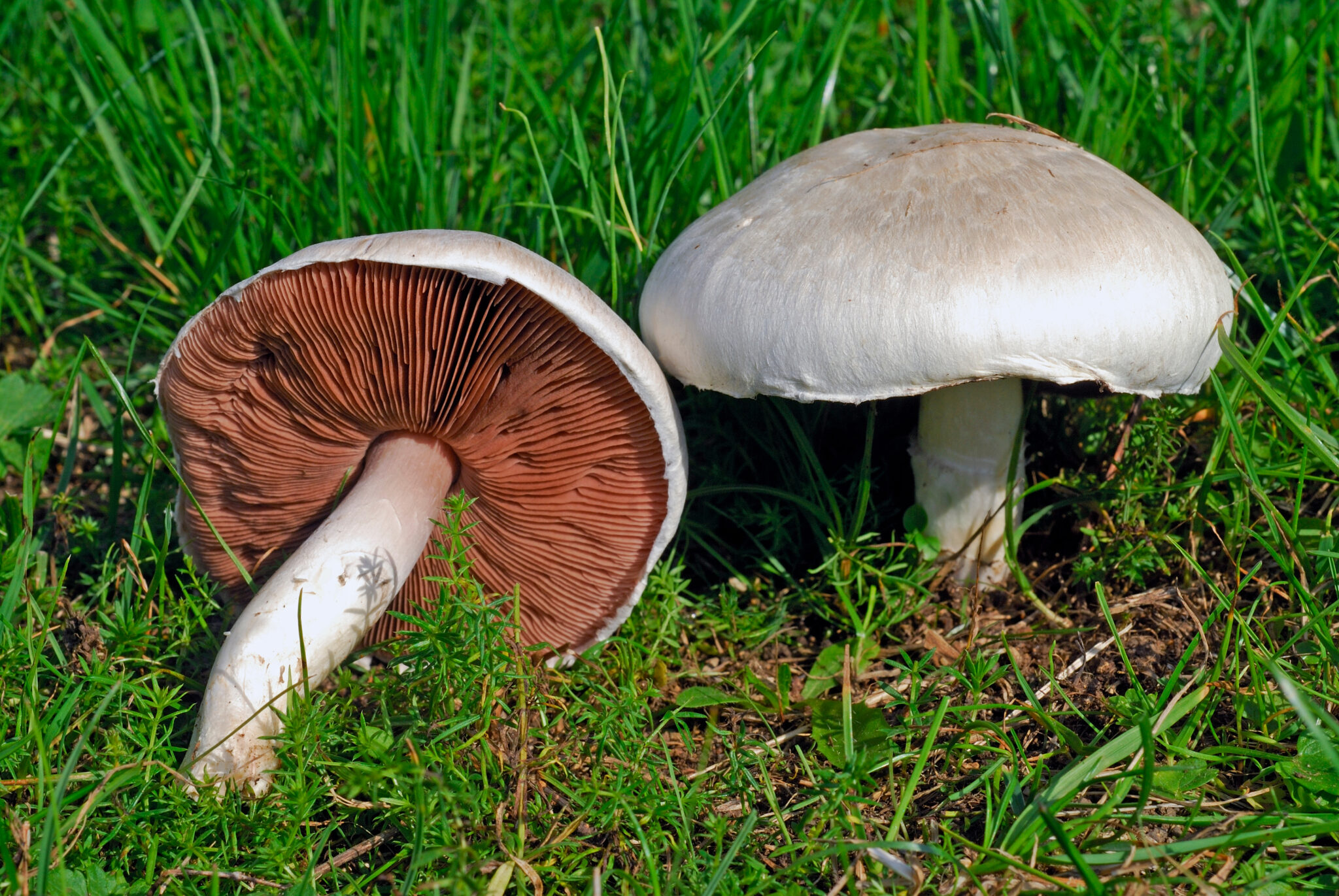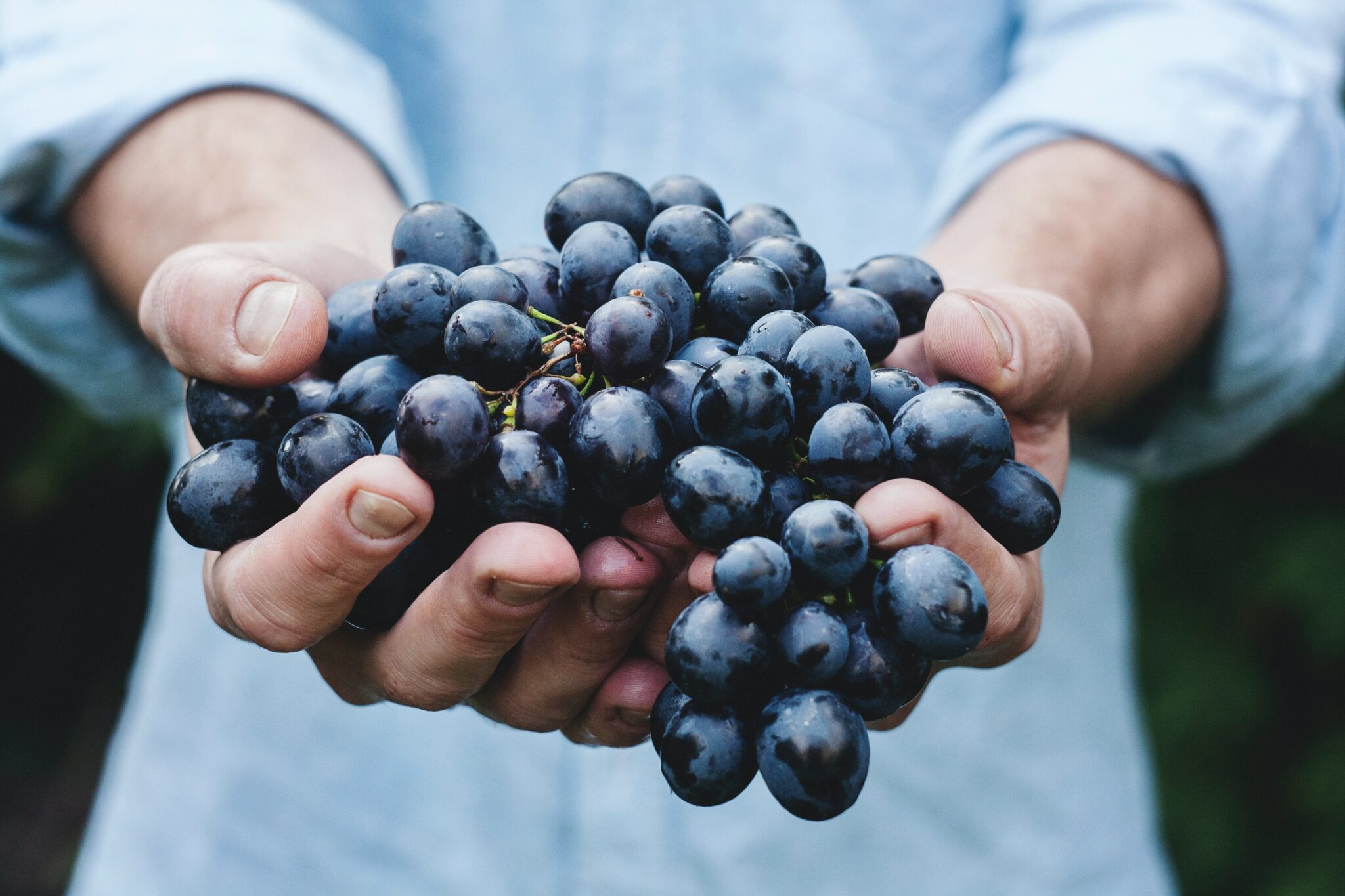Tourism may have transformed the island over the decades, but Mykonos has managed to retain an excellent standard of fishing and livestock farming (sheep, goats and cattle). Cheese-making is well developed, and there are several dairies across the island. All local, traditional cheeses are produced on home turf, the first being the well-known “Kopanisti Mykonos” (PDO): a soft white cheese with a very pronounced, piquant taste, made either from goat’s milk, sheep’s milk, cow’s milk or a mixture of all three.
A cheese that is the basis for a number of sweet and savoury dishes in Myconian cuisine is “tyrovolia”, which is the result of the first stage in the production process of Kopanisti, a white, creamy cheese with a mild flavour. Another characteristic cheese is “xinotyro” (sour cheese, also known as “xynomyzithra”), made from sheep’s or cow’s milk and with a sour taste, eaten fresh or dry, and in its desiccated form, rubbed over pasta. Yoghurt is also produced, as well as non-traditional cheeses like gruyere and blue cheese (such as stilton), in small quantities.
Of the cold meats, the best known are “louza” (similar to Italian “bresaola”, traditionally made from pork loin, salted and flavoured with truffle or allspice and air-dried, and “buboulo”, traditionally made from tenderloin in the same way as louza. Mykonos’ sausages are also popular, with aromas of truffle, oregano or allspice, and also air-dried.
Mykonos has a long tradition of bread and pastries, as evidenced by its famous windmills, a trademark of the island. Traditionally, the bread was made from barley (like the “kouvaroti”, a large loaf) or a mixture of of barley and wheat flour like in the “poulos”, an irregularly shaped loaf of sourdough bread, or the “poularaki” and the “paximadoikouloura”, an elongated loaf of bread from which rusks are made.
Festive breads include the Christmas bread, with raisins, walnuts, almonds or hazelnuts, orange, aniseed, Easter “Lazarakia”, anthropomorphically-shaped buns and Easter “kouloures”, doughnut-shaped and flavoured with orange. Among the types of handmade pasta are “chondros” (coarsely ground wheat trahanas, made from desiccated sour milk), “arando”, steamed small balls of dough, and “matzo”, similar to noodles and made from barley flour and milk.
Herbs, spices and wild greens
The dry climate of the island, its weather conditions and the northerly winds that give it a windswept character, mean that Mykonos has a correspondingly low, dry vegetation. Oregano, thyme, thyme, wild thyme and capers grow across many parts of the island, while on the beaches one can find sea samphire. Despite intense tourist activity, which has significantly reduced the growth of wild vegetation, especially on the island’s coastlines, the flora of Mykonos and neighbouring Rhinia includes some of the most interesting endemic species of the Aegean.
Of the greens gathered by locals, most are eaten in stews, such as “ascolimbri”, which, when they grew in surplus, were pickled and preserved by housewives in vinegar and garlic. “Aporichia”, or black mustard sprouts, are usually served with potatoes and eggs or other spring vegetables. They are also used to flavour meat dishes, the best-known recipes being goat with egg-lemon sauce and “provasia” wild greens, lard with sheep’s milk and provasia, to which wild marrows, mushrooms and couscous are added, and “azonaras” (pork knuckle) with provasia.
The “sohi” (or “zochoi”, Sonchus oleraceus and Urospermum picroides) and milkweed are eaten as a boiled salad. “Karides” (baby artichokes also called “allivaras”, “hirovoski”, “karidakia” or “anginarakia” on other islands) are usually pickled in vinegar. They are eaten as a meze with souma (an alcoholic drink similar to raki, like grappa) or added to fresh salads like capers.
“Rapanides”, large radishes (Raphanusspinosus and Raphanusraphanistrum), are boiled. The “alendrides” (Hymenonema graecum), a plant native to the southern Cyclades and a favourite of the Mykonian people, is also eaten boiled and seasoned with lemon and olive oil. The “opsimes”, whose roots have become soggy, are usually added to “skordalia” garlic sauce. The chicory (also known as “yialoradika”, “alourides” or “stamnagathia”) is usually eaten boiled as a salad, while its tender shoots are eaten raw. “Perounithres” (or Erodiumcicutarium), “kousounades” (or wild poppies) and “lapatha” (Rumexcrispus) are used in pies. “Moschopapadies” (Tordylium apulum) play an aromatic role in herb and wild greens pies. Winter wild asparagus is eaten fried with or without eggs and as a warm salad.
The “manites”, various wild mushrooms of Mykonos, also play a delicious role in the island’s cuisine. The “volites” (Agaricus campestris), are usually eaten roasted, the “angathites” (Pleurotus eryngii) and “moschomanites” are usually fried, and the “lardomanites” (Volvariella gloiocephala), are floured and fried with fried onions. In Mykonos, many dishes come from the sea, unlike the majority of islands in the Aegean where the local cuisine is broadly centred on meat.
A staple dish is the “kakavia” fish soup, which includes eel and rockfish (and sometimes forked hake), celery, potatoes and onions, the “kolisiani”, sea anemones that are battered and fried, the “pachiki” made of mung beans, fried onions and wine, the “stingray salad”, a salad of boiled stingray served with skordalia garlic sauce, the “smerna savoro”, grilled parrotfish (with its giblets), the «gopa” (bogue) and saffron fish cooked “yahni” style, “smaridaki” (tiny whitebait), fried plain or with onions, salted cod with chard, ‘papa-yachni’, mackerel or mullet in a tomato sauce seasoned with plenty of garlic.
Moving away from the sea, the most famous and best known dish is the “Mykonos onion pie” made with cheese, dried and fresh onions and aromatic herbs, dill and fennel. Other traditional dishes are the “mostra”, similar to the Cretan “dakos”, a rusk topped with kopanisti, tomato, olive oil and salt and pepper and is served as a meze that often accompanies souma, the “louvia” as a snack (vine leaves served with garlic sauce), “fasoulakia” (black-eyed beans with “tiganisti”, a sauce of vinegar, flour and onions), provasia wild greens cooked with meat, “arazonas”, salted pork shank cooked with provasia or wild greens in general.
Desserts
As for sweets, the most famous are almond cookies baked in the oven and sprinkled with icing sugar, “kalathia amygdalou”, or ‘almond baskets’, which are nests of tart-like dough filled with almonds, sugar, crushed rusk and egg and seasoned with cinnamon and cloves, “melopita”, an open pie with honey and cinnamon, the “gries” pancakes served with sugar or honey and cinnamon, the “tsimbita”, open pies like Santorini’s “meltinia”, with tirovolia cheese, honey, cinnamon and vanilla, and the “rafioli”, crescent-shaped cheese pies with a cheese filling and orange zest, served with honey.
Wines
After a long period of abandonment of viticulture, things started to change about 30 years ago and today there are a few wineries producing some interesting wines. The Aegean varieties Assyrtiko, Athiri, Aedani Monemvasia, Mandilaria and the foreign varieties Cabernet Sauvignon and Syrah are cultivated on the island.
Read also:



